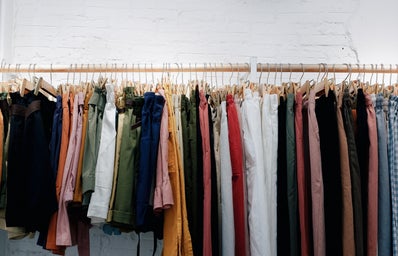“Top 10 Amazon Finds,” “PR Unboxing,” “Look What the Mailman Brought Me,” “I Bought It So You Don’t Have To”
The For You Page (FYP) of TikTok is constantly flooded with these types of videos. Unsurprisingly, these short clips often show trendy clothes and useful gadgets that keep you up to date on the latest fads. Many female TikTokers also cultivate an “older sister” vibe, acting as someone giving you insider tips on where they got their jeans or their favorite pair of leggings. This trend can foster a community of people sharing their favorite things, which is often comforting.
One or two of these videos on your FYP seem harmless. It’s just one TikToker sharing where she got her workout attire; what’s the problem? The problem is that there are rarely just one or two. For example, TikToker Brooke Anderson posts upward to twenty haul videos every week for her 1.1 million followers. Each one of her TikToks shows her unboxing an average of five packages. Anderson mostly unboxes Amazon packages, but many other haul videos star the popular cheap clothing brand Shein. These haul accounts make it easy to get trapped in a cycle of continuous buying, and increase consumerism to devastating effects. Hauls most notably increase the scope of fast fashion.
The fast fashion industry is a relatively new phenomenon that describes how, in the past few years, trend cycles have quickened, clothes have become cheaper, and shopping has became more of a hobby. Fast fashion brands use up non–renewable resources, contributing to increased greenhouse gas emissions, while using extreme amounts of water and energy. Although these haul accounts may think they’re participating in an innocent endeavor, they contribute to the problem. By Anderson posting upward of twenty haul videos a week, she promotes the heightened trend cycle and encourages her followers to participate. She’s constantly buying new “trendy” clothes that she’ll replace with new items the next week.
TikTokers like Anderson can keep up with this constant cycle because the clothes are cheap. It’s easy for followers to see a video, like one of the items, and head over to Amazon’s “buy with one-click” feature or the brand linked in TikToker’s bio. This buying is not sustainable. Furthermore, the items in haul accounts are most often from Amazon or Shein. The clothes from Amazon aren’t always made ethically and most contribute to harmful effects on the environment. Shein also participates in unethical labor practices. Other unethical brands often shown in these TikToks include Aliexpress, Pretty Little Thing, Zaful, and Zara.
Haul accounts need to consider the implications of posting a video, while viewers should be cautious when watching videos to avoid falling into the trap of ceaseless buying. People should ask themselves if they’ll be wearing these items in the long–term or if the brand promotes sustainable practices. Popular TikTokers should consider posting fewer hauls or making different types of videos. For example, haul accounts could promote sustainability by showing “thrift” hauls. These are already on the FYP with titles such as “Come Thrift with Me,” “Look What the Thrift Gods Brought Me.”
People with a large following can promote suitability to their young followers. One example is TikToker Claire C, who posts “thrift flips,” along with her thrift hauls. Thrift flips are the process of taking second-hand clothing and making alterations. These flip videos promote healthy environmental practices by promoting using clothes that are already made and turn them into something personable and unique. However, thrift flips can also contribute to a scarcity of items at thrift stores that impoverished people actually need; ultimately, buying up large amounts of clothing or items to show viewers is an unnecessary practice.
However, haul accounts can be great for small businesses to get their brand started, as TikTok is a free marketing platform. Haul accounts can get the word out on small ethical brands, expanding small businesses’ reach, and creating more ethical shoppers.
It’s also important to note that, while stopping people from posting hauls from unethical brands can help reduce fast fashion, it’s only the first step. To really stop the fast fashion industry’s devastating effects, consumers need to hold big brands accountable for their actions.


